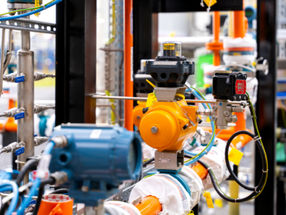Solid and Moldable: Further growth expected for the polystyrene and extruded polystyrene market
Advertisement
One of the oldest plastic types is still of great economic importance: about 90 years ago, polystyrene was first produced in Germany. To this day, most yogurt cups are made of polystyrene. Since 1950, polystyrene has also been foamed and marketed as, for example, “Styropor”. Ceresana examined the global market for polystyrene (PS) and expanded polystyrene (EPS). The analysts expect global sales generated with these plastics, i.e. PS and EPS combined, will rise to more than USD 37.3 billion until 2026.
Polystyrene Universe: PS, GPPS, HIPS, XPS
Polystyrene (PS) includes general purpose polystyrene, high impact polystyrene, and extruded polystyrene. Advantageous characteristics of PS, e.g. surface gloss, impact resistance, resistance to stress cracking, and flow properties allow for a broader range of applications compared to EPS. Global PS demand reached a volume of approx. 11.2 million tonnes in 2018. PS is mainly used in the packaging industry. Additionally, it is often used in casings of monitors, televisions, printers, and other electrical devices as well as consumer and construction goods. In the packaging sector, PS is used for food packaging in particular as its high rigidity guarantees dimensional stability. Additionally, PS packaging tends to weigh very little and thus is cost-effective, which is an important advantage in the highly competitive packaging market. Applications are, for example, cups for dairy products such as yogurts, cream, milk, milk mix beverages, cream cheese, curd cheese or desserts. A high tensile strength is important for multipacks in particular. Therefore, high impact polystyrene (HIPS) is often mixed with general purpose polystyrene (GPPS). Extruded polystyrene (XPS) was originally developed for floats and buoyancy aids. Today, this foam material is mainly used to make insulating panels for buildings.
Expandable Polystyrene (EPS)
The light, solid, and individually moldable EPS foam is mainly used by the construction industry for thermal and sound insulation. Worldwide, EPS-based products are used in the construction of new residential buildings and in the refurbishment of old buildings. For example, glass and stone wool, PUR foams but also insulation material based on renewable resources compete with EPS. Until 2026, Ceresana expects an increase of global EPS demand by 2.6% per year. This sector profits from efforts concerning climate protection and public support measures to increase energy efficiency especially in Europe. While the construction industry accounts for a share of 60% of EPS demand in Europe, it reaches less than 48% in Asia, which is the largest EPS market. EPS is also used for helmets and life jackets, beverage cups, packaging, casting molds, and numerous other products. Countries in the regions Asia-Pacific and North America dominate the market for EPS packaging with a total demand of 2.8 million tonnes in 2018. In these countries, EPS containers are used, e.g., for transportation of fresh fish or electronic devices.
Most read news
Other news from the department business & finance

Get the chemical industry in your inbox
By submitting this form you agree that LUMITOS AG will send you the newsletter(s) selected above by email. Your data will not be passed on to third parties. Your data will be stored and processed in accordance with our data protection regulations. LUMITOS may contact you by email for the purpose of advertising or market and opinion surveys. You can revoke your consent at any time without giving reasons to LUMITOS AG, Ernst-Augustin-Str. 2, 12489 Berlin, Germany or by e-mail at revoke@lumitos.com with effect for the future. In addition, each email contains a link to unsubscribe from the corresponding newsletter.
Most read news
More news from our other portals
Last viewed contents
Evergas secures 15 year contracts with INEOS Europe






























































